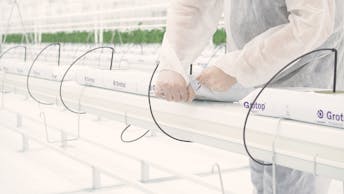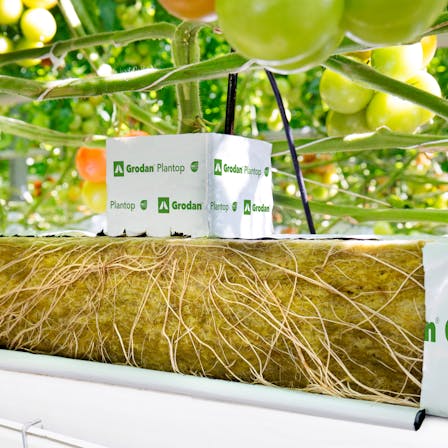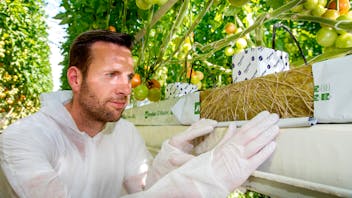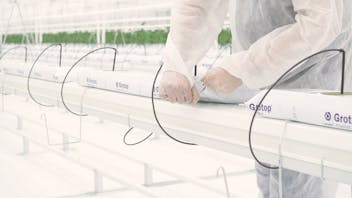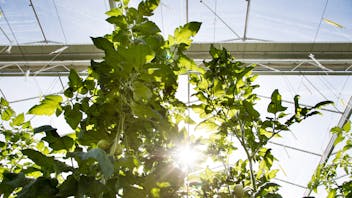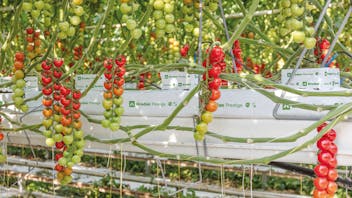There’s been a change in the height of the stone wool slabs that growers use for their crops. Whereas they tended to use slabs with a height of 7.5 cm in the past, many now opt for 10-cm-high slabs. This trend became especially apparent after the introduction of the Next Generation 2.0 technology, says Gert-Jan Goes. Now, high crop-specific slabs are available for all crops.
The top layer of today’s slabs remains moister, and forms a good connection with the propagation block. But this, combined with the slab’s greater height, may imply greater suction of the slab on the block. This effect of the slab extracting moisture from the block is the reason why drip irrigation has to be switched on several times per 24 hours from the time of planting until the young plant’s roots have penetrated the slab. “We have found that it’s better to drain the slab in two phases rather than one after its saturation,” explains Goes.
Main lines of the approach
- Saturate the slabs for at least 24 hours using water with a sufficiently high EC.
- Cut a hole above the seal to allow 1/3 pre-drainage of the slab; place the block on the plant hole.
- Switch on your drip irrigation once or at most twice a day for the first few days.
- Switch off the irrigation as soon as the first roots have penetrated the slab by about 2 cm.
- Cut the definitive drainage holes when the first slabs have almost dried out (4–14 days).
Better for the plant
The first phase of restricted drainage means that the top layer of the slab will remain moist. This remaining water will neutralise the suction on the propagation block, which will consequently not dry out immediately. After a few days the roots will have penetrated the slab sufficiently and the irrigation may be switched off. Roots will grow above the dropping water level. It’s important not to irrigate the plants until the definitive drainage holes have been cut because that would cause the water level in the slab to rise above the tips of the roots.
“We have found that this approach leads to a better connection between the block and the slab and the development of a fine, well branched and healthier root system,” says Goes. “The slabs’ water content will also remain more uniform while they contain that layer of water, and this will result in a more uniform continuation of the control phase.”
Less water to be purified
As far as the substrate is concerned there’s no need to discharge the first drainage water. After all, it doesn’t contain any plant-unfriendly substances. However, many growers don’t like to recycle this water because young plants are extremely vulnerable in the darkest month of the year, also to any residues of crop protection products or disinfectants that may have been used for or after the previous crop. Growers who want to discharge the first drainage water instead of recycling it (at a later stage) must purify it first. Collecting, disinfecting and purifying such a first flush call for substantial storage and cleaning capacities. In this respect the stepped approach recommended by the technical specialist implies another advantage. Growers need initially process only 1/3 of the amount of drainage water, and their capacity will usually be satisfactory for this, especially in combination with the longer processing time. By the time that the second drainage hole is cut the plants will have consumed so much water that there will be very little water left to drain.
Cleaning the silos
“Another advantage of this approach is that growers have more time to clean their silos,” adds Goes. He ends his explanation with a final tip: “If you line the gutters with plastic sheet before you place your slabs in them there’ll be less risk of the accumulation of minerals, crop remains and algae. It will then take you less time to clean the gutters when you switch to a new crop. Such accumulations also involve a risk of diseases, so prevention is better than cure.”
Watch a video demonstrating this stepped approach below.





